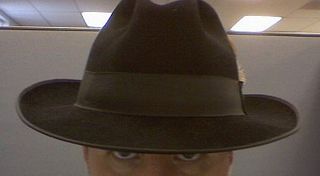By Dr. Ken Broda Bahm –

So, let’s say you are BP, and after the Deepwater Horizon spill you are facing several thousand claims in the courtroom. You are potentially more worried by one big claim in the court of public opinion: you’re seen as a bad actor. That perception certainly has less to do with any causal analysis of the failure of the blowout preventer, and more to do with beliefs that the company seems to be finger-pointing, didn’t come off well before congress, or even gets too many tax breaks. As much as a company in litigation might strive to cultivate a better image, there is also the temptation to say, “Who cares? We don’t expect them to love us. Just to focus on the claims and listen to the evidence.”
The problem, according to soon to be released research, is the public and members of juries don’t assign blame independent of assessed credibility. Being the party wearing the black hat isn’t so much a consequence of being found at fault, it is a precursor. Blame is often a result of low opinions. Let’s take a quick look at the research, and also at what defendants can do about it if there is a risk they’ll be the ones wearing the black hats in the courtroom.
The Research
The study (Nadler & McDonnell, 2012) to be published next year in the Cornell Law Review, focuses on reactions to a number of case scenarios in which the moral character, awareness, and motive of a number of actors were manipulated. For example, participants heard about a defendant whose campfire spread and caused the deaths of firefighters, or whose uncontrolled dogs mauled a child. In each version, the facts supporting the causal claim were the same, but other factors about the character or motivations of the defendants were varied.
The bottom line is when participants heard about a bad person, or a person whose motive for acting was bad, they were consistently more likely to blame that person and to believe their actions brought about the harmful outcome. It may be no surprise that the bad actor is disliked, but this research goes a step further to show when a party is perceived as a black hat, that can be a sufficient step to finding the party is blameworthy, acted intentionally, and caused damages.
Implications and Recommendations
This tendency to blame based on character might simply stem from our greater comfort in placing fault on a bad actor (based on our tendency to believe in a “just world“). Additionally, or as the researchers suggest, it may be bad character or motive serves as a kind of proxy for intentionality. In other words, we believe bad people are more likely to be aware their actions cause harms, and are more responsible for outcomes as a result.
If you are the party that is at risk of wearing that black hat in trial, there are a few things you can do to address the spillover.
1) Fight to keep character issues out, when you can truly keep them out.
When the plaintiff is trying to introduce evidence that would paint you negatively in ways that are irrelevant to liability or cause, then obviously you should fight hard to keep that information out. You might consider using research such as the study cited above in order to support your motions. While it is always nice to believe in fantasies (e.g., Santa, fairies, the power of limiting instructions), it is better to rely on social science, and the more judges are aware of research like this, the better. One important caveat on this advice, is to be careful you are not closing the door on yourself. If the negative information is likely to be known or assumed by your jurors, then precluding character evidence may just preclude you from offering a response.
2) When character comes in, remember your character defense may be as important as your cause and liability defense.
Focusing on the positive story is an important part of nearly every litigation defense, and that can include:
Your standard practices to avoid bad outcomes
Your good motive
What you did well in this case
While our impulse might be to come out of the gate denying the claims or attacking the plaintiff, we have found it is often far better to focus on this favorable information first. Why? Until they see you as credible, they aren’t listening to your defense. Prior beliefs can be powerful, but they can also be changed. If your voir dire has been successful in rooting out those who would have the hardest time changing their opinions of you, then there is a good chance the remaining jurors will listen to the more positive side of the story, and at least change that hat to gray instead of black.
______
Related Post:
______
 Janice Nadler & Mary-Hunter Morris McDonnell (2012). Moral Character, Motive, and the Psychology of Blame NORTHWESTERN UNIVERSITY SCHOOL OF LAW PUblic Law and Legal Theory Research Paper Series, 11 (43)
Janice Nadler & Mary-Hunter Morris McDonnell (2012). Moral Character, Motive, and the Psychology of Blame NORTHWESTERN UNIVERSITY SCHOOL OF LAW PUblic Law and Legal Theory Research Paper Series, 11 (43)
Photo Credit: hymedom, Flickr Creative Commons